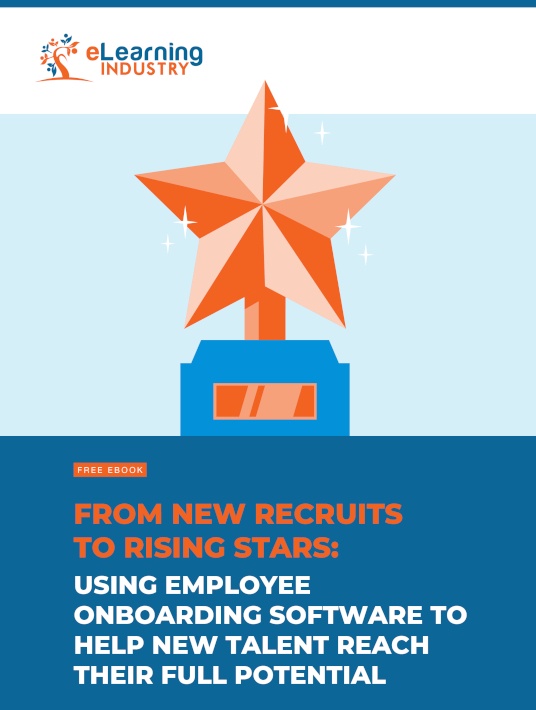Global Onboarding Guide: How To Use Employee Onboarding Software To Train Your Multicultural Workforce
In some places, handing someone cash using your left hand is an insult. In others, like Asia, the order of names is reversed. Their surname comes first, so if you call them by their ‘first’ name, you’re being disrespectful. In some places, clearing your plate is offensive, because it implies you weren’t served enough food. Others see a burp as the ultimate compliment to the chef. When combined with the usual nerves, this cultural confusion can be debilitating for your new recruits. How can online employee onboarding software help? In this global onboarding guide, I'll share tips to use employee onboarding software to train your multicultural workforce.

1. Give Them Someone To Look Up To
Many work-places are homogenous, so it can be challenging to find a veteran ‘minority’ to buddy up with your new hire. For example, most people in your office probably speak the same native language or have similar professional backgrounds. Yet it’s essential, because someone with similarities can guide them through nuances you may not even notice. This is where online training helps. It’s easier to sift through internet networks and find them a peer. If there’s nobody in-house, reach out through professional and personal networks. Or hire a culture consultant from their native demographic. Make sure it’s someone personable and open, not a pandering figurehead. ‘Interview’ multiple ‘mentor’ candidates until you find the right fit.
2. Localize Your Training
Online training should be relevant to your new hire. If they’ve recently migrated for the position, you can teach them local customs and locations. A global onboarding guide will direct you to use examples from their native culture, so it’s easier for them to understand. It could be as basic as local names for familiar concepts, such as elevator vs lift, flat vs apartment, van vs taxi etc. Avail their online training course in their native tongue as well. Translate it comprehensively; don’t just default to auto-translate software. You can personalize the online training course too, drawing them in by speaking to their interests.
3. Teach Before You Test
The western approach is often to learn by doing. Just present a task and let them figure it out. Indigenous communities are typically more hierarchical, with a deeper sense of guidance, authority, and deference to age and experience. So, dumping a new hire in this way could make them feel isolated, unwanted, and unnecessarily pressured. Even if your office-culture doesn’t coddle, offer online training tutorials they can follow. Despite the fact that you don’t ask an actual person, chatbots are still useful assistance tools. It lets new hires do it themselves without making them feel abandoned or incompetent. You can also create a comprehensive onboarding guide that maps out their training path and includes supplemental links.
4. Beef Up Your FAQs
Your database may be helpful, but it’s probably pretty generic. Review it with a focus on culture. During the interview process, find out what your new hire needs to feel at home. Then plug some of those things into your orientation course. It could be something like where to find food from their native land, or how shopping and transport works. It may involve dating mores, or gender/age dynamics. Or it could be more complex, like how to address the boss or clients. (Mr? First name? Last name? Job title? Eye contact? Handshake? Talk first or wait to be addressed?) These are all cultural elements that can make your out-of-town hire feel inadequate and misplaced, tempting them to leave.
5. Create A Chain Of Query
We give a lot of airplay to chains of command, but a hire from a different culture needs access. They need to know who they can(‘t) ask for help. A global onboarding guide will show you that in some cultures, you can’t talk to an elder unless they speak to you first. In others, you can’t be around the opposite gender unchaperoned, even in the work-place. These little things can make for a very uncomfortable work-space. Do some genuine research into your hire’s background and socialization. Then use relevant elements from it to help them adjust to your office culture. It will help them, and everyone else, feel at ease with one another.
6. Use LMS Reports To Identify Go-To Resources
LMS analytics give you the power to delve into employee preferences so that you can gauge their expectations and requirements. For example, most of the employees from your European branch seem to favor your interactive onboarding guide. Complete with embedded videos and simulations. You can use this data to custom tailor your new hire training to accommodate their needs. Such as offering them more real-world activities and demo videos that they can use to broaden their understanding.
There are multiple scenarios where you may have a new employee from a different culture. It could be a diversity measure, an exchange program, or a franchise set-up. You might even have geographically dispersed sales partners who need product knowledge training. The queasiness of a new job is tough enough without adding culture shock, so help them ease in. Assign them to a mentor/buddy who looks like them. Offer cultural context through case studies and familiar examples. Don’t just toss them into the deep end; teach them the basic strokes first. Adjust your FAQs for multi-cultural relevance. Make it clear who they can approach with specific questions, both professionally and socially. These 6 tips will help them acclimate, providing a better office experience for everyone.
How can you make sure that an onboarding software includes all the must-have features, needed for your in-house and remote employees? How can you use onboarding software to figure out which fresh recruits are going to advance up the corporate ladder? Download our eBook From New Recruits To Rising Stars: Using Employee Onboarding Software To Help New Talent Reach Their Full Potential to learn how employee onboarding software can help you turn new recruits into rising stars. It also features tips on how to train employees on a tight timeline, develop online training resources for those with special needs, as well as a fool-proof onboarding guide for new staff members with limited tech experience.

